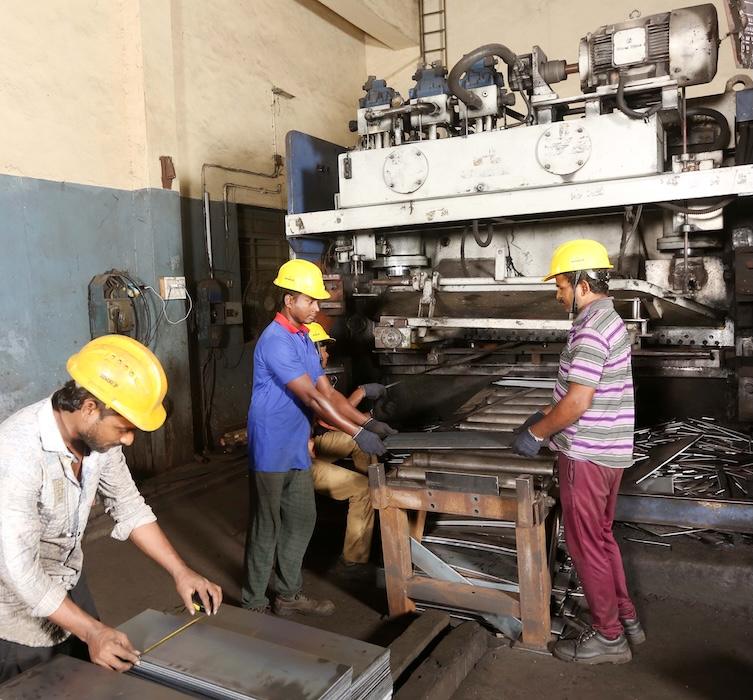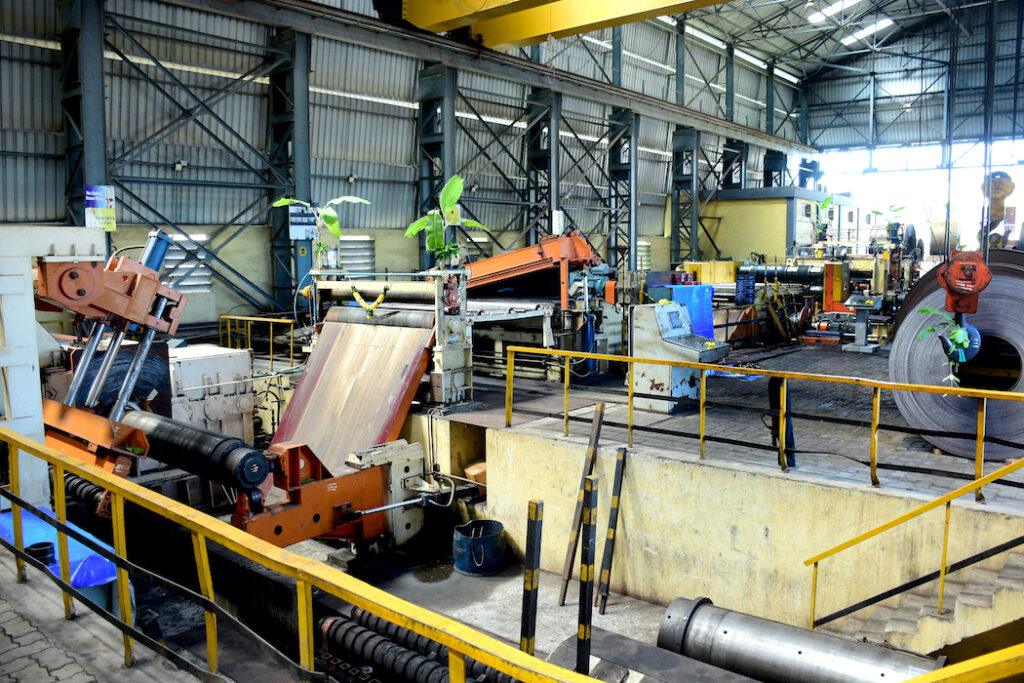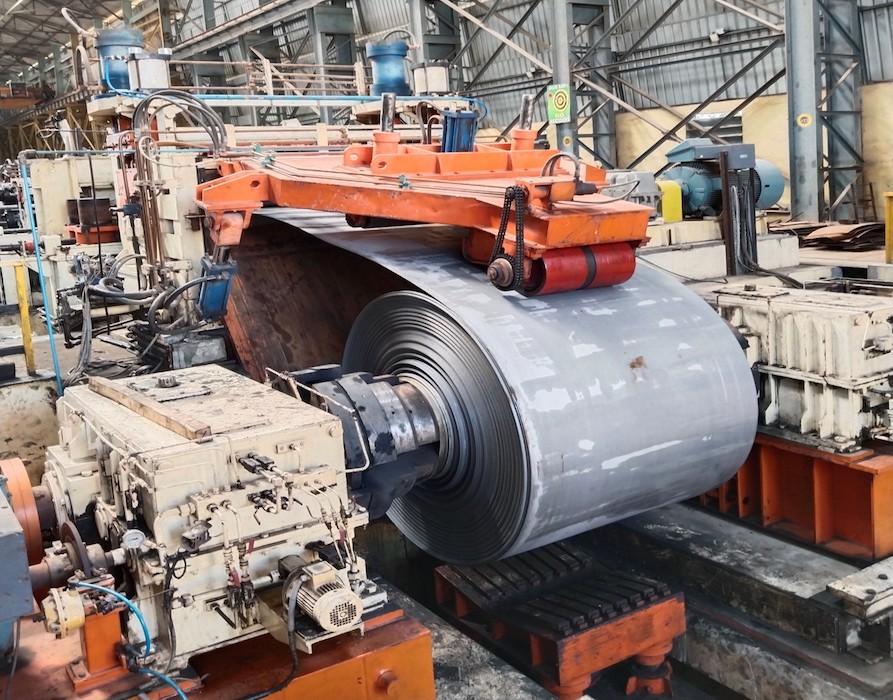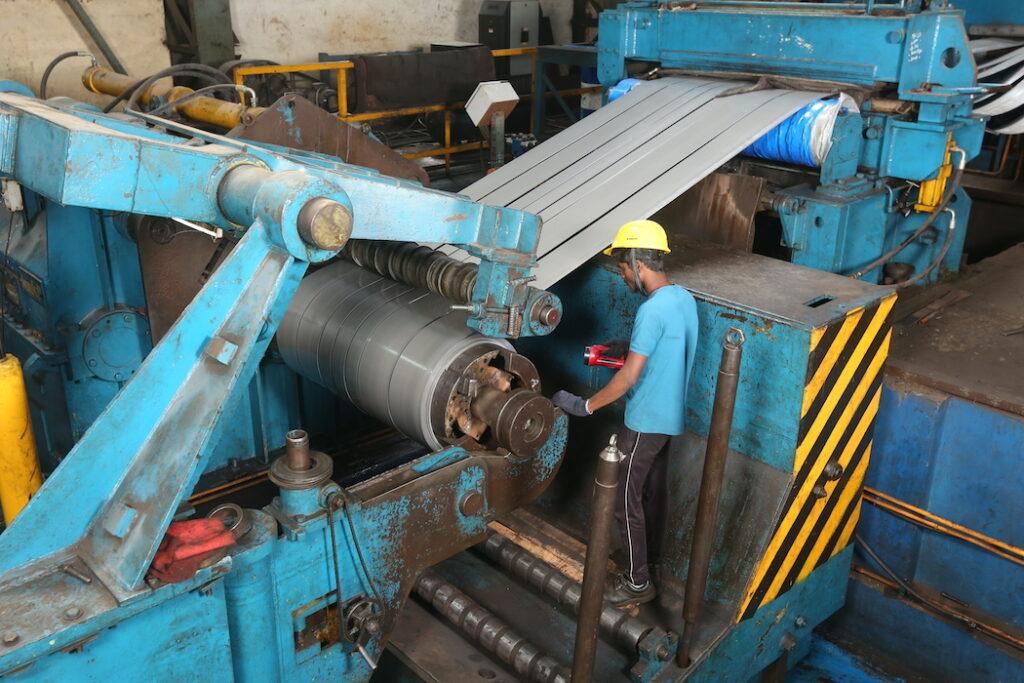For decision-makers in fabrication and manufacturing, the efficiency of material procurement and processing directly impacts profitability. Sourcing raw steel from primary producers like SAIL or JSW Steel often means accepting standard coil or plate formats that rarely align with production requirements. This mismatch creates inefficiencies: excess waste, bloated inventory costs, and delays in fabrication workflows. Partnering with a steel service center integrated into a trading ecosystem—like Kapil Groups—resolves these challenges through precision, scalability, and operational synergy.
Customized Steel Processing for Reduced Waste and Improved Efficiency

Steel producers typically supply materials in standard coil or plate form, which may not align with a manufacturer’s needs. A trading company linked to a service center adds value by processing these into precise dimensions. Kapil Groups offers slitting (cutting coils into narrow widths with ±0.25mm tolerance) and decoiling (converting coils into sheets up to 15 meters long with 1.5mm/m flatness). This ensures customers receive steel tailored to their fabrication requirements, reducing scrap and rework.
Kapil Groups, with an annual capacity of 150,000 tons, handles both small-batch orders and large-scale projects without compromising turnaround times. Every step includes rigorous quality checks—during decoiling, materials are inspected for surface defects, ensuring only flawless steel reaches the customer.
Integrated Procurement and Tailored Processing Solutions

A key advantage of this partnership is the one-stop solution it provides. Businesses can source premium steel and have it processed to their specifications instead of coordinating with multiple vendors. This simplifies logistics and reduces lead times.
Flexibility is critical for manufacturers. Kapil Groups accommodates orders of any size, from small urgent jobs to bulk long-term projects. Unlike traditional suppliers, they impose no handling charges for trading customers, translating to direct cost savings.
A fabricator can store 5mm-thick steel coils at Kapil’s service center and request custom cuts—like 2-meter lengths—when needed. This “just-in-time” approach reduces inventory costs and frees up factory space.
Smart Storage & Inventory Management

Another cornerstone of this partnership is efficient storage. Kapil Groups’ 5-acre Chennai facility is designed for organized, climate-controlled stockholding. Each material batch is assigned a unique processing ID and barcode, ensuring smooth tracking and preventing mix-ups.
The two-tier storage charge system adds financial flexibility. Customers pay only for actively used stock, while long-term reserves incur minimal fees. This model suits businesses managing varying demand or seasonal projects.
Strategic Advantages of Integrated Steel Trading and Processing

The benefits for manufacturers and fabricators are evident:
- Cost Efficiency: Reduce waste by purchasing pre-processed steel.
- Operational Agility: Access on-demand processing and storage, scaling resources as required.
- Quality Assurance: Use ISO 9001-certified processes and pre-purchase material verification.
Companies like Kapil Groups eliminate traditional challenges by combining trading expertise with in-house processing, enabling customers to focus on core operations.
Driving Profitability and Efficiency Through Integrated Steel Solutions
For fabricators and manufacturers, integrating steel trading and processing is a competitive necessity. Kapil Groups’ 60-year legacy and technical capabilities address core challenges:
- Waste Reduction: Precision cutting lowers scrap by as much as 20%.
- Cost Control: Storage flexibility and bulk sourcing reduce working capital requirements.
- Quality Confidence: ISO-certified processes and pre-delivery inspections adhere to industry standards.
Kapil Groups offers a proven pathway to leaner, more agile operations in a sector with tight margins and critical timelines.


